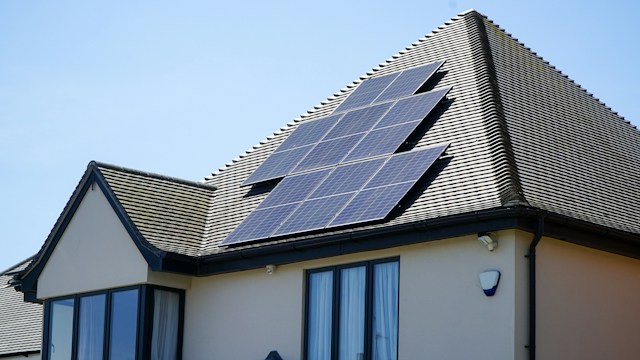The integration of renewable energy sources, particularly solar power, into Heating, Ventilation, and Air Conditioning (HVAC) systems, is a rapidly evolving frontier that promises to redefine the future of building climate control. This integration not only represents a leap towards energy efficiency and environmental responsibility but also signals a shift in reducing operational costs and reliance on traditional energy sources. As we delve into the latest advancements and possibilities, this blog will provide insights into how solar power and other renewable energies are setting the stage for a cleaner, more sustainable future in HVAC solutions.
Harnessing Solar Energy for HVAC Efficiency
The integration of solar energy into HVAC systems represents a significant stride towards eco-friendly and energy-efficient climate control. Solar-powered HVAC systems harness the sun’s energy, an abundant and renewable resource, to heat and cool buildings, thereby reducing reliance on conventional electricity and fossil fuels.
Solar HVAC systems typically involve the use of solar panels, either photovoltaic (PV) or solar thermal panels. PV panels convert sunlight directly into electricity, which can power traditional electric HVAC units. This approach not only cuts down on electricity bills but also reduces the carbon footprint of the building. Solar thermal panels, on the other hand, use sunlight to heat air or water, which is then utilized in heating systems.
One of the key advantages of solar-powered HVAC systems is their scalability. They can be designed to cater to various building sizes and energy requirements, from residential homes to large commercial buildings. Additionally, in regions with strong sunlight, these systems can generate excess energy, which can either be stored for later use or fed back into the power grid, often resulting in energy credits.
Moreover, advancements in solar technology continue to improve the efficiency and cost-effectiveness of these systems. Governments and environmental agencies often offer incentives and rebates for solar HVAC installations, further promoting this sustainable option.
By harnessing solar energy, HVAC systems not only contribute to a greener planet but also offer long-term cost savings, making them an increasingly attractive option for forward-thinking consumers and businesses.
The Rise of Eco-Friendly Refrigerants in HVAC Systems
A pivotal aspect of evolving HVAC technology is the shift towards eco-friendly refrigerants, marking a significant step in reducing the environmental impact of air conditioning and heating systems. Traditional refrigerants used in HVAC systems have been known to contribute to ozone depletion and global warming. The industry’s response has been to develop and integrate refrigerants with a lower Global Warming Potential (GWP) and zero Ozone Depletion Potential (ODP).
The new generation of refrigerants, such as R-32, R-1234yf, and R-1234ze, are not only more environmentally friendly but also offer improved energy efficiency. These refrigerants have a lower GWP, meaning they have less impact on global warming compared to their predecessors like R-22 and R-410A. This transition is crucial in the fight against climate change, as HVAC systems are a significant contributor to greenhouse gas emissions worldwide.
Governments and environmental organizations globally are phasing out the use of high-GWP refrigerants through regulations like the Montreal Protocol and its Kigali Amendment. This has prompted manufacturers to redesign HVAC systems to be compatible with these newer, eco-friendlier refrigerants.
Additionally, the adoption of these advanced refrigerants often comes with the benefit of improved system performance. They can provide better heat transfer properties and operate at lower pressures, potentially extending the life of the HVAC equipment and reducing maintenance costs.
By embracing eco-friendly refrigerants, the HVAC industry is not only adhering to environmental regulations but also contributing to a more sustainable future, aligning with the growing global emphasis on reducing ecological footprints.
Integrating Smart Technology with Renewable Energy
The convergence of smart technology with renewable energy sources in HVAC systems is paving the way for a new era of efficiency and environmental stewardship. This integration is a critical component in the evolution of HVAC systems, aligning with the growing demand for sustainable and intelligent building solutions.
Smart HVAC systems equipped with IoT (Internet of Things) capabilities can optimize energy use by learning and adapting to user behavior and environmental conditions. For instance, they can adjust temperatures based on occupancy patterns or external weather conditions, reducing energy waste. When paired with renewable energy sources like solar power, these systems offer an even greater potential for efficiency and sustainability. They can effectively utilize the renewable energy generated, store excess energy, and even return it to the grid, further enhancing their eco-friendliness.
Moreover, these smart systems provide real-time data analytics on energy consumption and system performance. This information is invaluable for building managers and homeowners, enabling them to make informed decisions about energy use and system maintenance. Predictive analytics can also alert users to potential system issues before they become major problems, facilitating timely maintenance and reducing downtime.
The integration of smart technology with renewable energy in HVAC systems represents a significant advancement towards creating more sustainable, efficient, and responsive climate control solutions. This integration not only supports environmental goals but also offers enhanced user comfort and cost savings over the long term.
Future Trends: Sustainable Innovations in HVAC Design
The future of HVAC systems is being shaped by a wave of sustainable innovations, driven by the need for energy efficiency and environmental responsibility. These upcoming trends reflect a commitment to creating HVAC solutions that are not only effective in climate control but also gentle on the planet.
One of the exciting developments is the increased use of geothermal heat pump systems. These systems leverage the stable temperatures underground to provide heating and cooling, significantly reducing energy consumption and greenhouse gas emissions. Geothermal systems are becoming more accessible, offering a long-term, sustainable option for both residential and commercial buildings.
Another trend is the incorporation of building-integrated photovoltaics (BIPV). Unlike traditional solar panels, BIPV systems are seamlessly integrated into the building’s design, such as in windows or facades, generating energy while also contributing to the building’s aesthetic appeal.
We are also witnessing a rise in the adoption of passive cooling and heating designs. These designs focus on maximizing natural ventilation and light, reducing the reliance on mechanical HVAC systems. Incorporating elements like green roofs, thermal mass, and natural shading, passive design strategies can significantly lower energy consumption.
Furthermore, the push towards net-zero energy buildings is becoming increasingly prominent. These buildings produce as much energy as they consume, often through a combination of energy-efficient HVAC systems and renewable energy sources.
These sustainable innovations in HVAC design not only point towards a greener future but also align with the evolving expectations of consumers and businesses who are increasingly conscious of their environmental impact.

